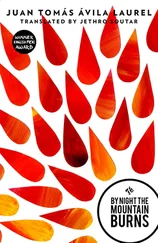Babur - The Bābur-nāma
Здесь есть возможность читать онлайн «Babur - The Bābur-nāma» — ознакомительный отрывок электронной книги совершенно бесплатно, а после прочтения отрывка купить полную версию. В некоторых случаях можно слушать аудио, скачать через торрент в формате fb2 и присутствует краткое содержание. Жанр: foreign_antique, foreign_prose, на английском языке. Описание произведения, (предисловие) а так же отзывы посетителей доступны на портале библиотеки ЛибКат.
- Название:The Bābur-nāma
- Автор:
- Жанр:
- Год:неизвестен
- ISBN:нет данных
- Рейтинг книги:4 / 5. Голосов: 1
-
Избранное:Добавить в избранное
- Отзывы:
-
Ваша оценка:
- 80
- 1
- 2
- 3
- 4
- 5
The Bābur-nāma: краткое содержание, описание и аннотация
Предлагаем к чтению аннотацию, описание, краткое содержание или предисловие (зависит от того, что написал сам автор книги «The Bābur-nāma»). Если вы не нашли необходимую информацию о книге — напишите в комментариях, мы постараемся отыскать её.
The Bābur-nāma — читать онлайн ознакомительный отрывок
Ниже представлен текст книги, разбитый по страницам. Система сохранения места последней прочитанной страницы, позволяет с удобством читать онлайн бесплатно книгу «The Bābur-nāma», без необходимости каждый раз заново искать на чём Вы остановились. Поставьте закладку, и сможете в любой момент перейти на страницу, на которой закончили чтение.
Интервал:
Закладка:
Again there is Asfara, in the hill-country and nine yīghāch 63by road south-west of Marghīnān. It has running waters, beautiful little gardens ( bāghcha ) and many fruit-trees but almonds for the most part in its orchards. Its people are all Persian-speaking 64Sārts. In the hills some two miles ( bīrshar‘ī ) to the south of the town, is a piece of rock, known as the Mirror Stone. 65It is some 10 arm-lengths ( qārī ) long, as high as a man in parts, up to his waist in others. Everything is reflected by it as by a mirror. The Asfara district ( wilāyat ) is in four subdivisions ( balūk ) in the hill-country, one Asfara, one Warūkh, one Sūkh and one Hushyār. When Muḥammad Shaibānī Khān defeated Sl. Maḥmūd Khān and Alacha Khān and took Tāshkīnt and Shāhrukhiya, 66I went into the Sūkh and Hushyār hill-country and from there, after about a year spent in great misery, I set out (‘azīmat ) for Kābul. 67
Again there is Khujand, 68twenty-five yīghāch by road to the west of Andijān and twenty-five yīghāch east of Samarkand. 69Khujand is one of the ancient towns; of it were Shaikh Maṣlaḥat and Khwāja Kamāl. 70Fruit grows well there; its pomegranates are renowned for their excellence; people talk of a Khujand pomegranate as they do of a Samarkand apple; just now however, Marghīnān pomegranates are much met with. 71The walled town ( qūrghān ) of Khujand stands on high ground; the Saiḥūn River flows past it on the north at the distance, may be, of an arrow’s flight. 72To the north of both the town and the river lies a mountain range called Munūghul; 73people say there are turquoise and other mines in it and there are many snakes. The hunting and fowling-grounds of Khujand are first-rate; āq kīyīk , 74 būghū-marāl , 75pheasant and hare are all had in great plenty. The climate is very malarious; in autumn there is much fever; 76people rumour it about that the very sparrows get fever and say that the cause of the malaria is the mountain range on the north ( i. e. Munūghul).
Kand-i-badām (Village of the Almond) is a dependency of Khujand; though it is not a township ( qaṣba ) it is rather a good approach to one ( qaṣbacha ). Its almonds are excellent, hence its name; they all go to Hormuz or to Hindūstān. It is five or six yīghāch 77east of Khujand.
Between Kand-i-badām and Khujand lies the waste known as Hā Darwesh. In this there is always ( hamesha ) wind; from it wind goes always ( hameshā ) to Marghīnān on its east; from it wind comes continually ( dā’im ) to Khujand on its west. 78It has violent, whirling winds. People say that some darweshes, encountering a whirlwind in this desert, 79lost one another and kept crying, “Hāy Darwesh! Hāy Darwesh!” till all had perished, and that the waste has been called Hā Darwesh ever since.
Of the townships on the north of the Saiḥūn River one is Akhsī. In books they write it Akhsīkīt 80and for this reason the poet As̤iru-d-dīn is known as Akhsīkītī . After Andijān no township in Farghāna is larger than Akhsī. It is nine yīghāch 81by road to the west of Andijān. ‘Umar Shaikh Mīrzā made it his capital. 82The Saiḥūn River flows below its walled town ( qūrghān ). This stands above a great ravine ( buland jar ) and it has deep ravines ( ‘uṃiq jarlār ) in place of a moat. When ‘Umar Shaikh Mīrzā made it his capital, he once or twice cut other ravines from the outer ones. In all Farghāna no fort is so strong as Akhsī. *Its suburbs extend some two miles further than the walled town.* People seem to have made of Akhsī the saying ( mis̤al ), “Where is the village? Where are the trees?” ( Dih kujā? Dirakhtān kujā? ) Its melons are excellent; they call one kind Mīr Tīmūrī; whether in the world there is another to equal it is not known. The melons of Bukhārā are famous; when I took Samarkand, I had some brought from there and some from Akhsī; they were cut up at an entertainment and nothing from Bukhārā compared with those from Akhsī. The fowling and hunting of Akhsī are very good indeed; āq kīyīk abound in the waste on the Akhsī side of the Saihūn; in the jungle on the Andijān side būghū-marāl , 83pheasant and hare are had, all in very good condition.
Again there is Kāsān, rather a small township to the north of Akhsī. From Kāsān the Akhsī water comes in the same way as the Andijān water comes from Aūsh. Kāsān has excellent air and beautiful little gardens ( bāghcha ). As these gardens all lie along the bed of the torrent ( sā’ī ) people call them the “fine front of the coat.” 84Between Kāsānīs and Aūshīs there is rivalry about the beauty and climate of their townships.
In the mountains round Farghāna are excellent summer-pastures ( yīlāq ). There, and nowhere else, the tabalghū 85grows, a tree ( yīghāch ) with red bark; they make staves of it; they make bird-cages of it; they scrape it into arrows; 86it is an excellent wood ( yīghāch ) and is carried as a rarity 87to distant places. Some books write that the mandrake 88is found in these mountains but for this long time past nothing has been heard of it. A plant called Āyīq aūtī 89and having the qualities of the mandrake ( mihr-giyāh ), is heard of in Yītī-kīnt; 90it seems to be the mandrake ( mihr-giyāh ) the people there call by this name ( i. e. āyīq aūtī ). There are turquoise and iron mines in these mountains.
If people do justly, three or four thousand men 91may be maintained by the revenues of Farghāna.
( b. Historical narrative resumed. ) 92
As ‘Umar Shaikh Mīrzā was a ruler of high ambition and great pretension, he was always bent on conquest. On several occasions he led an army against Samarkand; sometimes he was beaten, sometimes retired against his will. 93More than once he asked his father-in-law into the country, that is to say, my grandfather, Yūnas Khān, the then Khān of the Mughūls in the camping ground ( yūrt ) of his ancestor, Chaghatāī Khān, the second son of Chīngīz Khān. Each time the Mīrzā brought The Khān into the Farghāna country he gave him lands, but, partly owing to his misconduct, partly to the thwarting of the Mughūls, 94things did not go as he wished and Yūnas Khān, not being able to remain, went out again into Mughūlistān. When the Mīrzā last brought The Khān in, he was in possession of
Tāshkīnt, which in books they write Shash, and sometimes Chāch, whence the term, a Chāchī, bow. 95He gave it to The Khān, and from that date (890AH. -1485AD.) down to 908AH. (1503AD.) it and the Shāhrukhiya country were held by the Chaghatāī Khāns.
At this date ( i. e. , 899AH. -1494AD.) the Mughūl Khānship was in Sl. Maḥ=mūd Khān, Yūnas Khān’s younger son and a half-brother of my mother. As he and ‘Umar Shaikh Mīrzā’s elder brother, the then ruler of Samarkand, Sl. Aḥmad Mīrzā were offended by the Mīrzā’s behaviour, they came to an agreement together; Sl. Aḥmad Mīrzā had already given a daughter to Sl. Maḥmūd Khān; 96both now led their armies against ‘Umar Shaikh Mīrzā, the first advancing along the south of the Khujand Water, the second along its north.
Meantime a strange event occurred. It has been mentioned that the fort of Akhsī is situated above a deep ravine; 97along this ravine stand the palace buildings, and from it, on Monday, Ramẓān 4, (June 8th.) ‘Umar Shaikh Mīrzā flew, with his pigeons and their house, and became a falcon. 98
He was 39 (lunar) years old, having been born in Samarkand, in 860AH. (1456AD.) He was Sl. Abū-sa‘īd Mīrzā’s fourth son, 99being younger than Sl. Aḥmad M. and Sl. Muḥammad M. and Sl. Maḥmūd Mīrzā. His father, Sl. Abū-sa‘īd Mīrzā, was the son of Sl. Muḥammad Mīrzā, son of Tīmūr Beg’s third son, Mīrān-shāh M. and was younger than ‘Umar Shaikh Mīrzā, (the elder) and Jahāngīr M. but older than Shāhrukh Mīrzā.
Читать дальшеИнтервал:
Закладка:
Похожие книги на «The Bābur-nāma»
Представляем Вашему вниманию похожие книги на «The Bābur-nāma» списком для выбора. Мы отобрали схожую по названию и смыслу литературу в надежде предоставить читателям больше вариантов отыскать новые, интересные, ещё непрочитанные произведения.
Обсуждение, отзывы о книге «The Bābur-nāma» и просто собственные мнения читателей. Оставьте ваши комментарии, напишите, что Вы думаете о произведении, его смысле или главных героях. Укажите что конкретно понравилось, а что нет, и почему Вы так считаете.











